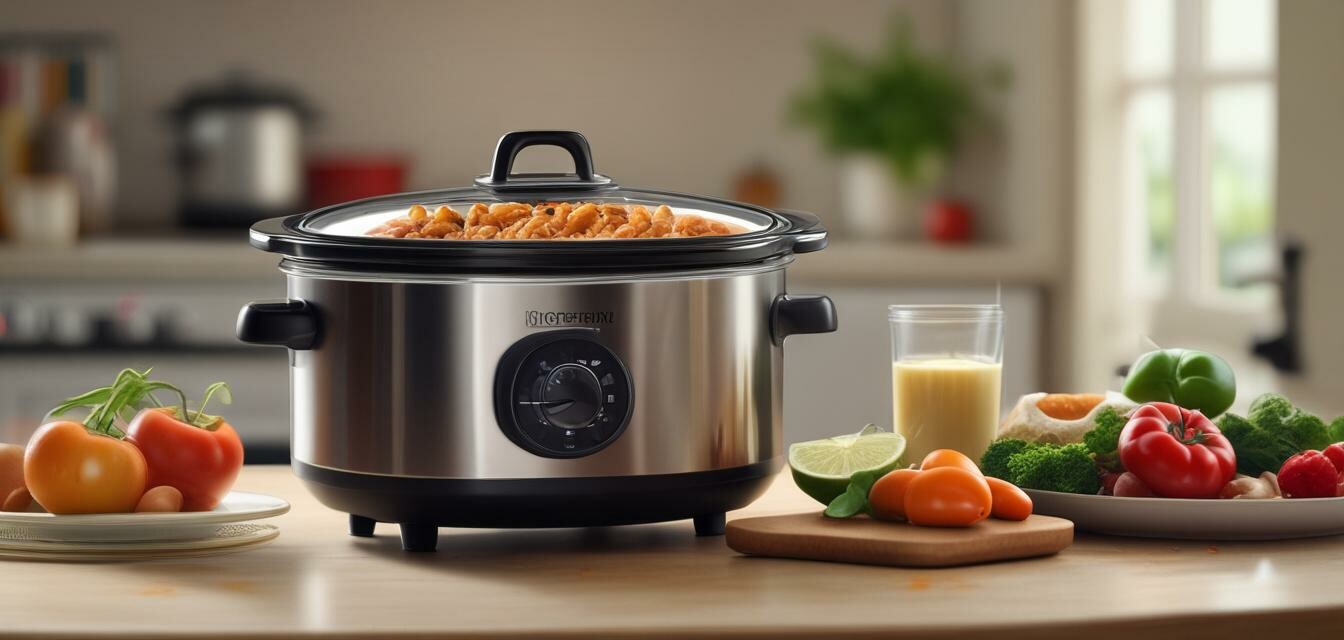
Energy Efficient Cooking Tips for Slow Cookers
- Slow cookers save energy compared to traditional ovens.
- Optimal settings and ingredient choices enhance cooking efficiency.
- Use the right pot size and keep the lid closed for best results.
- Plan meals ahead to minimize energy waste.
- For more detailed guides on energy-efficient appliances, visit our Tips and How-to Articles.
Slow cookers are a wonderful addition to any kitchen, particularly for those looking to save energy and enjoy delicious, home-cooked meals. By following specific techniques, you can maximize the energy efficiency of your slow cooker while still creating hearty, flavorful dishes. In this article, we will delve into optimal settings, ingredient choices, and creative meal planning to ensure you're getting the most out of your energy-efficient cooking.
The Benefits of Using a Slow Cooker
Before diving into tips, let’s explore why a slow cooker is an energy-efficient choice:
- Low Energy Consumption: Slow cookers typically use about 70% less electricity than conventional ovens.
- Convenience: Prepare meals ahead of time and come home to a warm, cooked dish.
- Enhanced Flavor: Cooking at lower temperatures often improves flavor and texture.
Maximizing Energy Efficiency
Here are several tips for maximizing energy efficiency while using a slow cooker:
1. Choose the Right Size Slow Cooker
Using a slow cooker that matches the size of your meals helps in energy conservation. A smaller cooker consumes less energy when cooking smaller portions.
2. Keep the Lid On
Every time you lift the lid from your slow cooker, heat escapes, increasing cooking time and energy use. Keep the lid on as much as possible.
3. Optimize Cooking Settings
Choose low or medium settings whenever possible, as they consume less energy than high settings.
4. Plan Your Meals
When you plan your meals in advance, you can cook larger quantities that last for several days. This reduces the need to cook frequently.
5. Use Fresh Ingredients
Fresh ingredients not only taste better but also require less energy to cook. Opt for in-season vegetables and meats that require less cooking time.
6. Use the Right Amount of Fluids
Using too much liquid can create steam, which makes the cooking process less efficient. Use only what's necessary to keep your dish moist.
Tips for Ingredient Choices
Selecting proper ingredients can significantly impact the overall energy efficiency of your meal preparation.
| Ingredient Type | Energy Efficiency Tip |
|---|---|
| Vegetables | Use root vegetables as they require longer cooking times and develop better flavors. |
| Meat | Choose lean cuts that prepare faster, reducing overall cooking time. |
| Grains | Avoid adding grains that require lengthy cooking times to reduce energy consumption. |
In addition to choosing your ingredients wisely, consider exploring other energy-efficient appliances to accompany your cooking methods. Multi-functional devices can often help in reducing energy consumption in the kitchen.
Cooking Time and Temperature Settings
To further enhance energy efficiency, adjust the cooking time and temperature according to your specific dish needs:
- For soups and stews, cook on low for 6-8 hours or high for 3-4 hours.
- For tougher cuts of meat, use the low setting to tenderize over longer periods.
- Plan meals that will cook thoroughly at lower settings to save on energy.
Cleaning and Maintenance for Energy Efficiency
Proper maintenance of your slow cooker can also have a significant impact on its energy consumption. Here are a few tips:
- Regularly clean the pot to prevent buildup, which can affect heating efficiency.
- Check the electrical cord for fraying or damage, ensuring functionality.
- If parts become loose, repair or replace them to maintain a snug fit that retains heat.
Pros
- Low energy consumption compared to other cooking methods.
- Easy meal preparation with set-and-forget convenience.
- Enhances flavor through longer cooking times.
Cons
- Longer cooking times can be challenging for last-minute meals.
- Requires planning for best results.
- Can take up significant counter space.
Conclusion
In conclusion, utilizing a slow cooker for energy-efficient cooking is not only a practical choice but also a delicious one. By following the tips outlined above, you can maximize your energy savings while preparing wholesome meals. For more advice on optimizing your home and kitchen appliances, explore our guide on Buying Guides and other posts in our Tips and How-to Articles category.
